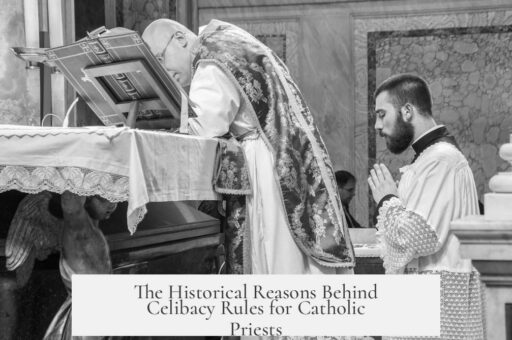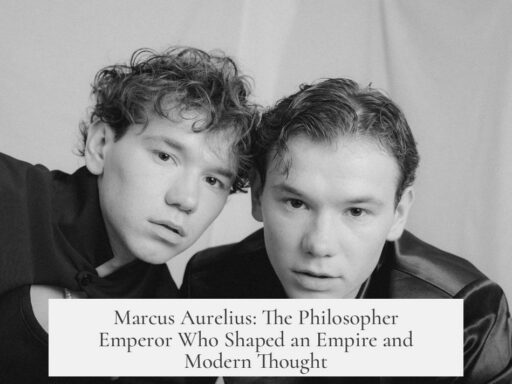Catholic priests are not allowed to marry due to a complex historical development rooted in early Church practices, theological teachings, Church reforms, and pragmatic considerations evolving over centuries. The practice of priestly celibacy traces back to the early centuries of Christianity and became firmly established by the 4th century CE. Initially, celibacy was encouraged on a voluntary basis as a path to spiritual virtue. Key Church Fathers like St. Ambrose and St. Jerome wrote extensively supporting this ideal, valuing sexual abstinence as a means to spiritual clarity and moral integrity.
The early Christian community, shaped by Jewish traditions and New Testament teachings, displayed varied approaches to marriage and celibacy. In Judaism, for example, priests of the Aaronic order practiced temporary separation from their wives while serving in the temple, emphasizing holiness and purity. The Essenes, a Jewish sect at the time, promoted continence and rejected marriage as a sign of spiritual discipline.
In the New Testament, Jesus commends celibacy but does not mandate it for all. The Apostle Paul advised those who can remain celibate to do so, but also counseled marriage to avoid sin. Early Church leaders echoed this nuanced approach: while clerics like deacons and bishops were permitted to have one wife and raise children, celibacy became a higher ideal, especially for ascetics and monks.
By the 4th century, celibacy became more official within the Church. It applied to both monks and the clergy, establishing a rule rather than a mere recommendation. This period saw theological elaboration on celibacy, with figures like St. Augustine arguing that virginity was superior to marriage, though both were good. These teachings gradually influenced Church discipline and clerical expectations.
The practice faced significant challenges during the 10th and 11th centuries. The Church grappled with issues such as simony—the purchase of Church offices—and clerical marriage or Nicolaism, which referred to priests’ illicit relationships and the inheritance of church positions by their children. The so-called “Rule of Harlots” or pornocracy signaled moral decay at times, undermining ecclesiastical authority.
The most decisive reform came under Pope Gregory VII during the Gregorian Reform in the 11th century. This movement sought to eliminate simony and enforce clerical celibacy strictly. Gregory VII, a former monk, enforced these ideals firmly, attempting to restore moral discipline and purity to the priesthood. While parish priests’ marriages lingered in practice for some time, celibacy increasingly became a required standard for the clergy.
Pragmatic motives also played a role. By mandating celibacy, the Church aimed to prevent the hereditary transmission of Church property and positions through priestly offspring. This restriction curtailed nepotism and protected Church assets from fragmentation. Celibacy also helped reinforce the unique spiritual identity and dedication of priests, distinguishing their vocation from secular life.
The Investiture Controversy in the 11th and 12th centuries further contextualizes the celibacy rule. Popes like Gregory VII challenged secular rulers, such as the Holy Roman Emperor, over control of ecclesiastical appointments. The assertion of papal authority over Church offices was supported by enforcing celibacy, which underscored the clergy’s spiritual loyalty over secular family ties.
The historical evolution of celibacy also reflects the Church’s desire to align clergy lifestyle with spiritual leadership ideals, as reflected in the writings of early Church Fathers. The preference for celibacy was based on a worldview that saw sexual desire as linked to original sin and distraction from divine service.
| Period | Key Developments |
|---|---|
| Early Church (1st–4th centuries) | Voluntary celibacy encouraged; mixed practices on marriage; theological support from Church Fathers. |
| 4th century | Celibacy becomes official Church rule for clergy and monks. |
| 10th–11th centuries | Challenges like simony and priestly marriage; moral decay prompts reforms. |
| Gregorian Reform (11th century) | Strict enforcement of celibacy; papal authority strengthened; marriage among priests discouraged. |
| Post-Reform (12th century onward) | Gradual full enforcement of celibacy, especially in Western Church; pragmatic and spiritual reasons reinforced. |
The continuous affirmation of priestly celibacy reflects a complex blend of spiritual, theological, and practical concerns. Spiritual ideals framed celibacy as a way to focus fully on God and the Church mission. Theological teachings from major Christian thinkers shaped its acceptance and perpetuation. Administratively, celibacy protected Church assets and safeguarded institutional independence from family networks.
- Catholic priestly celibacy grew out of early Church voluntary asceticism and became official by the 4th century.
- Challenges to celibacy in the Middle Ages, including simony and clerical marriage, led to reforms under Pope Gregory VII.
- Celibacy served both spiritual ideals and practical purposes, such as preventing nepotism and emphasizing total dedication.
- Biblical and Jewish precedents show varied attitudes but influenced the development of celibacy in Christianity.
- The rule remains to emphasize a priest’s spiritual commitment and a life set apart from secular family obligations.
Why did early Church leaders promote celibacy for priests?
Early Church leaders saw celibacy as a way to promote virtue and spiritual clarity. It began voluntarily and was supported by theologians like St. Ambrose and St. Jerome. By the 4th century, celibacy became an official rule for clergy and monks.
How did the Gregorian Reform affect priestly marriage?
Pope Gregory VII’s reform in the 11th century aggressively pushed against simony and priestly marriage. Though it didn’t end marriages immediately, it marked a turning point enforcing celibacy, especially for higher clergy.
What practical issues influenced the Church’s stance on celibacy?
Celibacy helped prevent priests’ wealth and power from being inherited by their children, which could lead to nepotism. This concern, known as Nicolaism, was linked to moral decline and was a key reason for enforcing celibacy.
Did early Christian teachings require priests to be celibate?
Early Christian texts did not mandate celibacy. Paul advised some to stay celibate but allowed marriage for others to avoid sin. Church leaders initially required clergy to have one wife, but celibacy later gained preference.
What role did historical events like the Investiture Controversy play in priestly celibacy?
The Investiture Controversy was a power struggle between the pope and Holy Roman Emperor over appointing bishops. Enforcing celibacy helped the Church assert independence by limiting clergy’s family ties and political influence.




